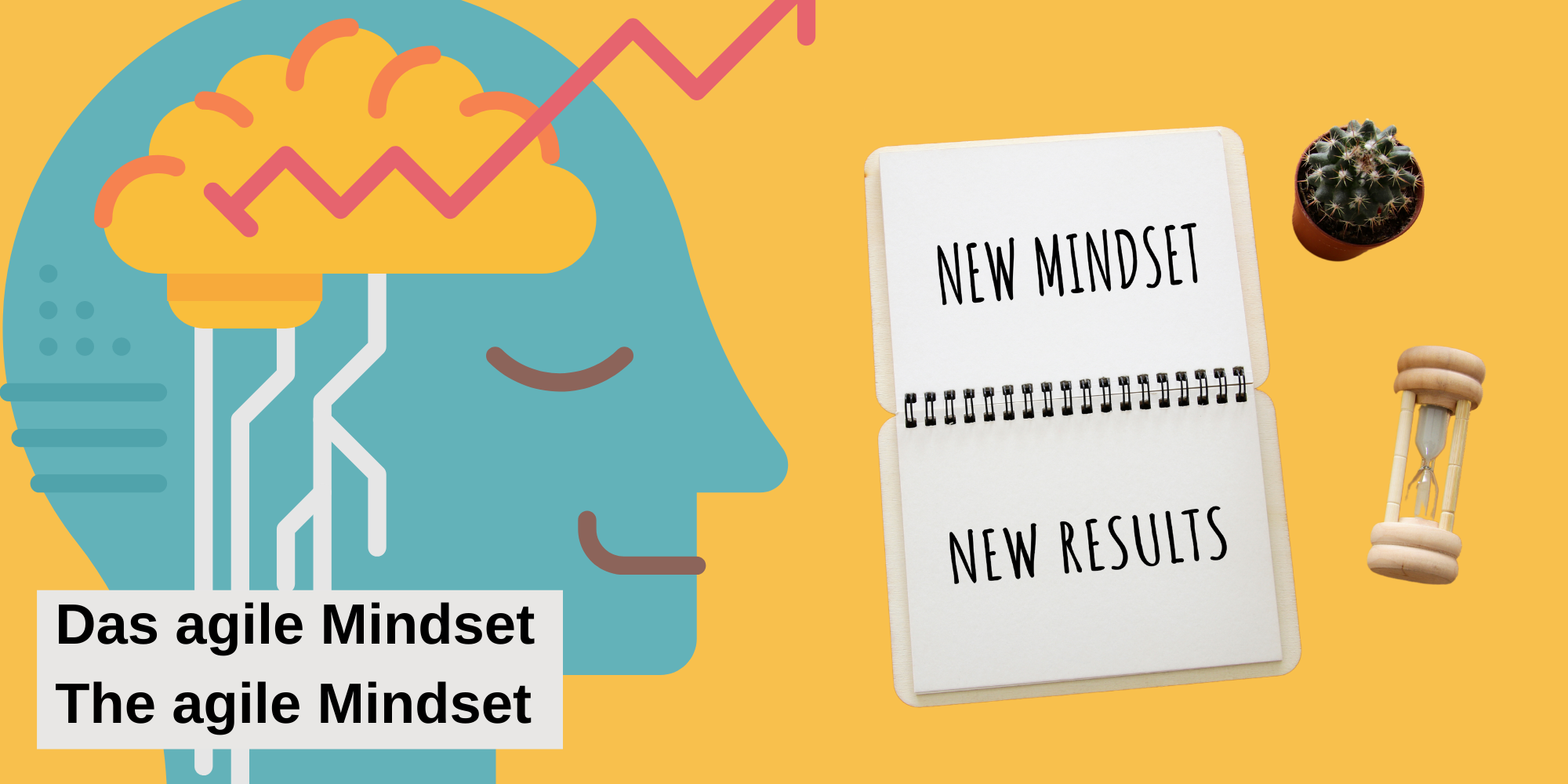You certainly know this situation: You want to initiate something new and innovative. But the structures in your company resist new ways. Your boss calls himself a “product owner” and talks a lot about “digital transformation.” But at the same time, he’s the only person who decides, and he has sole authority and wisdom when it comes to solving problems.
These are typical, very frustrating situations. And they describe very well why calling oneself a “product owner” or using Kanban boards does not automatically mean that the way of working is agile and innovation-driven. Because these are just tools and words, unfortunately, nowadays often simply buzzwords, meaning hole phrases.
The mindset of Design Thinking is different
There are different ways of thinking about the mindset of Design Thinking: as briefly summarized by the Hasso Plattner Institute, there is a human- and user-centered Design Thinking mindset. The Design Thinking Playbook by Michael Lewrick et al. describes the mindset as:
- driven by curiosity,
- accepting complexity,
- visualize and show,
- experiment and iterate (i.e., repeat),
- focus on people.
L. Carlgren et al. have produced an excellent summary on the Design Thinking Mindset. The authors observed five core themes:
- User focus in the sense of understanding latent needs.
- Problem framing in the sense of reframing the original problem. Incidentally, it is critical to Design Thinking to first focus very strongly on the problem before thinking about a possible solution. It is a very unusual approach that many people are unfamiliar with. This is because teams usually debate quickly about the best solution but rarely about whether the problem has been sufficiently understood.
- Visualization in the sense of making ideas and findings visible.
- Experimentation in the sense of an iterative process to create prototypes quickly and often.
- Diversity in the sense of forming very different teams with a democratic spirit. Incidentally, this is also atypical of classic hierarchical corporate structures.
Carlgren et al. summarize: “Design thinking [is] particularly resource-intensive in the initial phase, which led to friction and resistance when integrating design thinking into everyday work. […] This practice clashes with the more linear approach to problem-solving in many organizations.”
Implementing a design thinking mindset is difficult
In other words, implementing design thinking requires a focus on users, an open and respectful atmosphere in general, and openness in the sense of not devaluing but allowing all ideas, regardless of a person’s experience or position in the company.
What sounds simple means a significant problem in reality. Because this mindset also means: no one is the decision-maker, everything is very democratic – or better: non-hierarchical. If companies lack the right mindset, the idea of agility and design thinking will not work in the end. Many studies show that an arbitrary mixture of agile and classic project management methods only brings frustration but no benefit.
New “servant leaders” are needed to implement agility in companies successfully.
Or, to put it another way: What kind of company do you want to work for? In a company where authority and hierarchy describe what you have to do? Or in a company where you are valued as a person, where your insights are welcome? To the point: In the end, this is a question of the company and the type of company.
In a company, it is simple: Love it, change it or leave it!
In the company, at some point, you no longer have the choice.
If you want to learn more about agile and design thinking, subscribe to my newsletter.
And efficiently, I have developed the Design Thinking Box, where you can find cards and templates to make agility work for you – for example, as a solo entrepreneur. And surely feel free to contact me if you have questions – or use the comments for it.

Hello,
let me congratulate you to your website, blog and the article.
Thank you for sharing your pov. Yes. I am following your point.
Lucky you if you have a boss who is not skilled but willed to change 😀
But the situation is grave. We have to campaign against ignorance and unwillingness.
To me it seems that we have to build up structures in content and context – as described – in order to cope with phrases and buzzwords.
So thank you for sharing your insights.
Regards
Björn Gemmecke
Thanks a Lot, Björn, that you share your view.